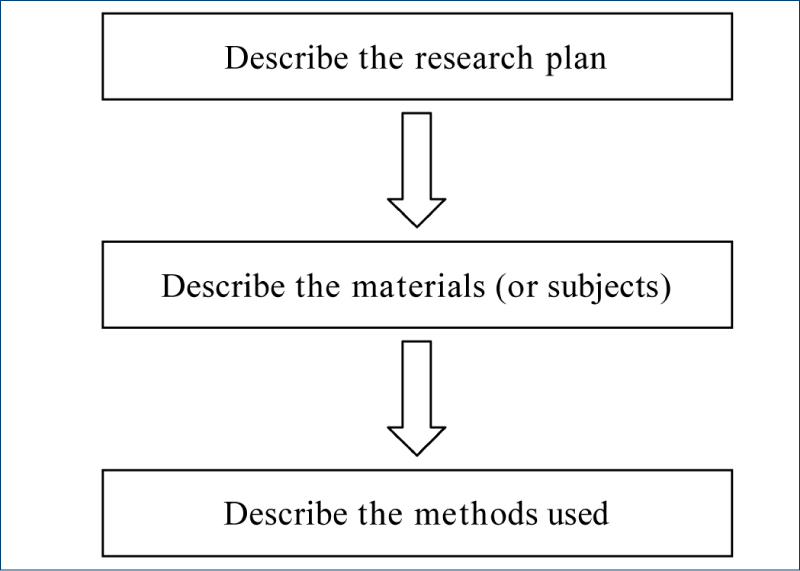The Methods section should be straightforward and describe exactly what you did.
If necessary, it can be subdivided into sections.
Give the details of your clinical and technical procedures.
Clearly show how and why you chose your observational or experimental subjects (patients or laboratory animals, including control).
Provide the age, sex and other relevant characteristics of your subjects and explain why only a certain category was included.
Specify what the descriptors mean, and say exactly how the data was collected.
Identify the methods, instrumentation (trade names and manufacturer’s name and location in brackets), and procedures.
Clearly specify all drugs and chemicals used: generic name, dose and route of administration.
State the manner by which the study was evaluated.
Be systematic:
-
You must describe exactly what you did: what and how experiments were run, what, how much, how often, where, when, and why equipment and materials were used.
-
The main consideration is to ensure that enough detail is provided to verify your findings and to enable the replication of the study, yet maintain a balance between brevity and completeness.
Other points to consider when writing the Materials and Methods:
1. Don’t mix results with procedures.
2.Omit all explanatory information and background - save it for the discussion.
3.Don’t include information that is irrelevant to the reader.
